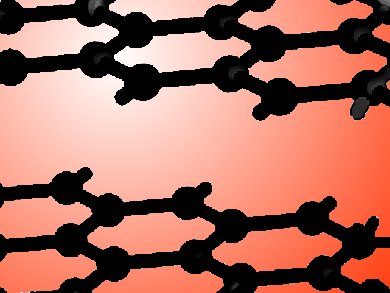Its electric-field-controllable band gap makes bilayer graphene increasingly attractive for electronic applications. Bilayer graphene is significantly less chemically reactive than monolayer graphene. Therefore, it is challenging to study its chemistry in detail.
Michael S. Strano and colleagues, Massachusetts Institute of Technology (MIT), Cambridge, MA, USA, have studied the covalent and noncovalent organic functionalization of bilayer graphene in an electrochemical reaction scheme with aryl diazonium salts.
They found that covalent functionalization at high chemical conversion leads to distinct changes in the Raman spectrum. The broadening and shift in the position of the split G peak into G+ and G− components – whose relative positions and intensities change with the degree of functionalization – reflect changes in the effective electric field perpendicular to the bilayer graphene surface as well as the presence of disorder, particularly in the broadening of the G+ peak.
Changes in the 2D peak indicate the effects of doping and disorder. The team found that, in particular, the broadening of the 2D22 and 2D21 components indicate covalent functionalization. The decrease in intensity of the 2D11 and 2D12 peaks correspond to doping.
Conductive atomic force microscopy (cAFM) images show that the noncovalent portions of the functionalization can be removed from the bilayer surface with a combination of mechanical cleaning and current annealing. It also shows that the covalently functionalized region is spatially inhomogeneous in its conductivity.
With this the researchers provide a set of spectroscopic markers for distinguishing covalent and noncovalent chemical functionalization of bilayer grapheme.
- Evolution of Physical and Electronic Structures of Bilayer Graphene upon Chemical Functionalization,
Qing Hua Wang, Chih-Jen Shih, Geraldine L. C. Paulus, Michael S. Strano,
J. Am. Chem. Soc. 2013.
DOI: 10.1021/ja4083914



